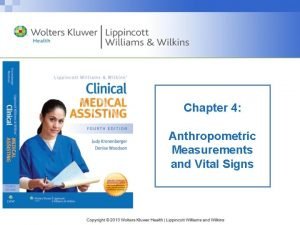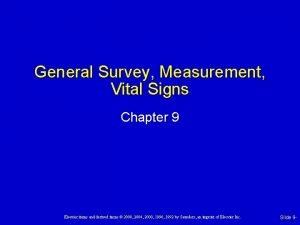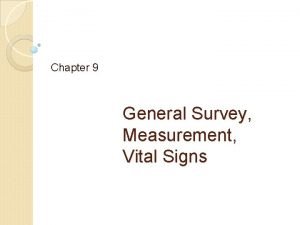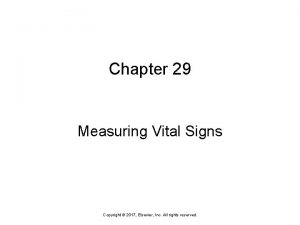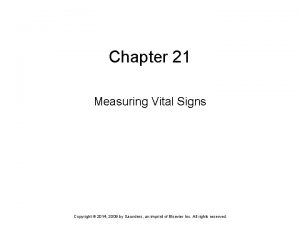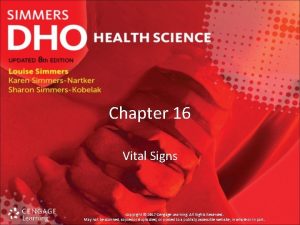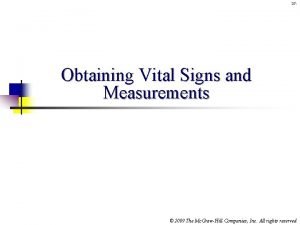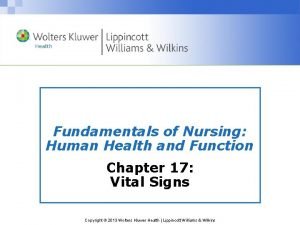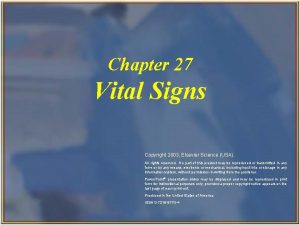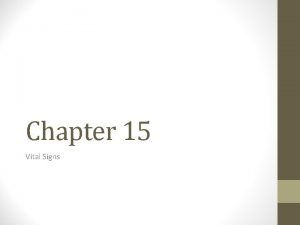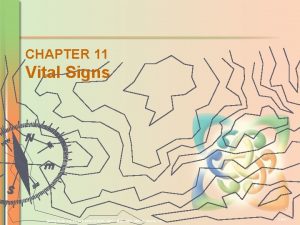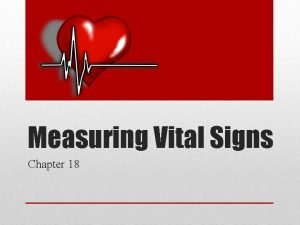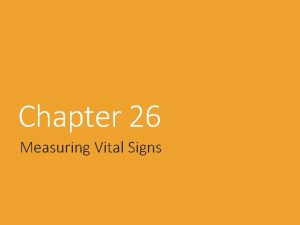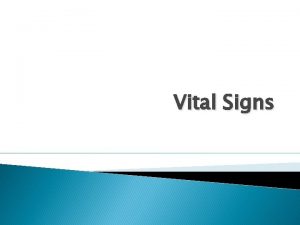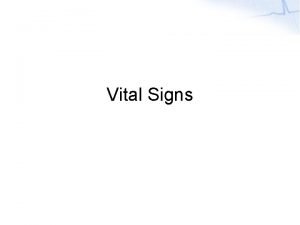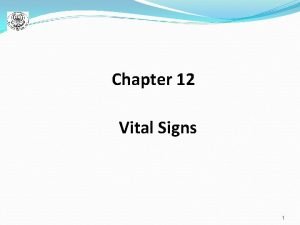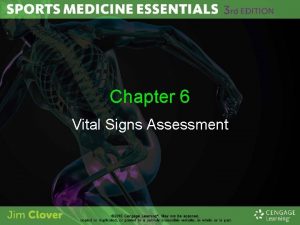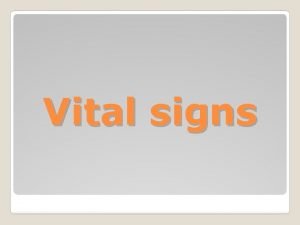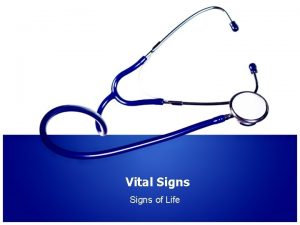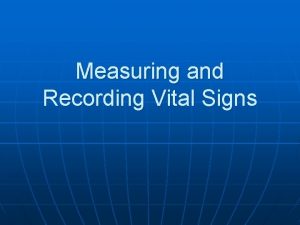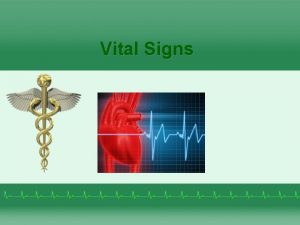Chapter 9 General Survey Measurement Vital Signs General















- Slides: 15

Chapter 9 General Survey, Measurement, Vital Signs

General Survey Physical appearance ◦ Age ◦ Gender ◦ Level of consciousness ◦ Skin color ◦ Facial features Body structure ◦ Stature ◦ Nutrition ◦ Symmetry ◦ Posture ◦ Position ◦ Body build, contour Slide 10 -

General Survey, cont. Mobility ◦ Gait ◦ Range of motion Behavior ◦ ◦ ◦ Facial expression Mood and affect Speech Dress Personal hygiene Slide 10 -

Measurement Weight ◦ Balance scale ◦ Recommended range for height Height Slide 10 -

Vital Signs Temperature ◦ Hypothalamus as thermostat mechanism ◦ Influences on temperature Diurnal cycle Menstrual cycle Exercise Age ◦ Routes of temperature measurement Oral Electronic thermometer Axillary Rectal Tympanic membrane thermometer (TMT) Temporal Thermometer Slide 10 -

Vital Signs, cont. Pulse ◦ Stroke volume ◦ Technique of measurement ◦ Rate Normal rate for age group Bradycardia <60 Tachycardia >100 ◦ Rhythm Sinus arrhythmia ◦ Force ◦ Elasticity Slide 10 -

Pulse rate-adult

Children

Vital Signs, cont. Respirations ◦ Technique of measurement ◦ Normal rate for age group Slide 10 -

Vital Signs, cont. Blood pressure ◦ Systolic pressure ◦ Diastolic pressure ◦ Pulse pressure ◦ Mean arterial pressure (MAP) ◦ Influences on blood pressure: Age Sex Race Diurnal rhythm Weight Exercise Emotions Stress ◦ Physiologic factors controlling blood pressure: Cardiac output Peripheral vascular resistance Volume of circulating blood Viscosity Elasticity of vessel walls Slide 10 -

Vital Signs, cont. Blood pressure measurement ◦ Sphygmomanometer ◦ Cuff width and size ◦ Blood pressure measurement in the arm Position of person Palpate brachial artery Proper inflation and deflation technique Korotkoff’s sounds I, systolic pressure IV, muffling of sounds V, diastolic pressure ◦ Common errors in blood pressure measurement ◦ Orthostatic (or postural) hypotension ◦ Blood pressure measurement in the thigh Thigh pressure higher than in the arm Screen for coarctation of aorta Slide 10 -

Blood Pressure

Blood Pressure

Estimating Blood Pressure

Which patient would be most likely to present with a pulse rate that is lower than normal? A 70 -year-old telephone salesman presenting with dehydration. B. A 20 -year-old runner who had surgery 4 days ago for a fractured leg. C. A 67 -year-old who presented with an exacerbation of his COPD A. Sli de 915
 Anthropometric measurement includes vital signs
Anthropometric measurement includes vital signs Chapter 9 general survey and measurement
Chapter 9 general survey and measurement Blood pressure child normal range
Blood pressure child normal range Divided highway begins sign
Divided highway begins sign Unit 14:3 measuring and recording pulse
Unit 14:3 measuring and recording pulse Chapter 36 body measurements and vital signs
Chapter 36 body measurements and vital signs Chapter 29 measuring vital signs
Chapter 29 measuring vital signs Oral temperature
Oral temperature 16:7 measuring and recording blood pressure
16:7 measuring and recording blood pressure Body measurements and vital signs chapter 36
Body measurements and vital signs chapter 36 Fundamentals of nursing chapter 17 vital signs
Fundamentals of nursing chapter 17 vital signs Chapter 27 measuring vital signs
Chapter 27 measuring vital signs Test chapter 16 vital signs
Test chapter 16 vital signs Apical pulse
Apical pulse Chapter 11 vital signs
Chapter 11 vital signs Chapter 26 measuring vital signs
Chapter 26 measuring vital signs
